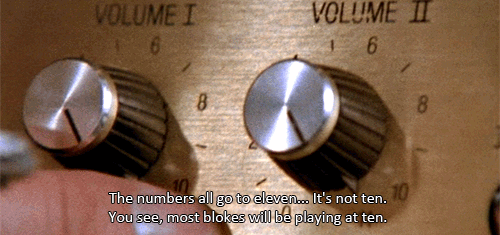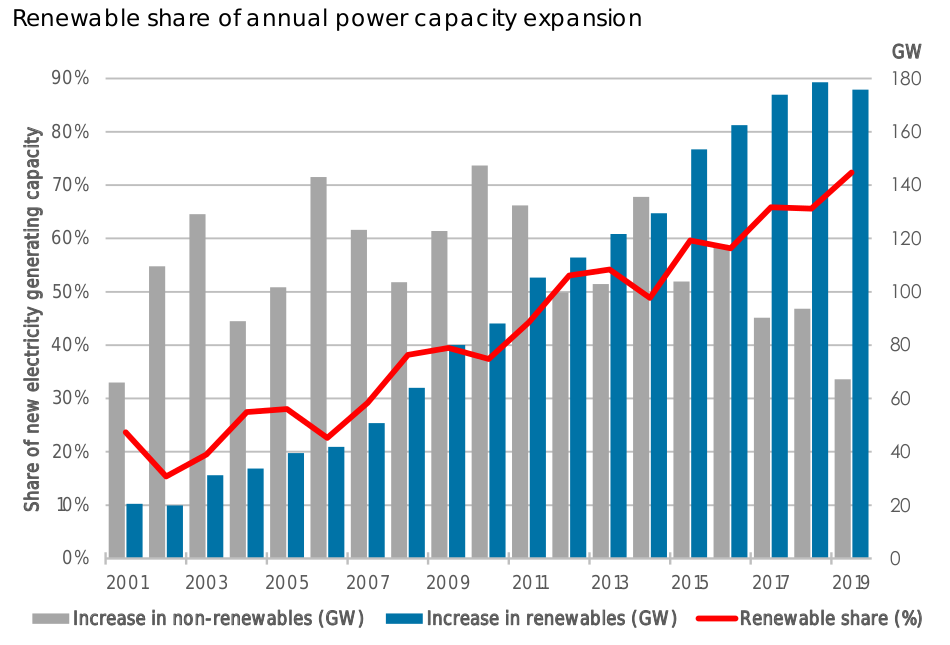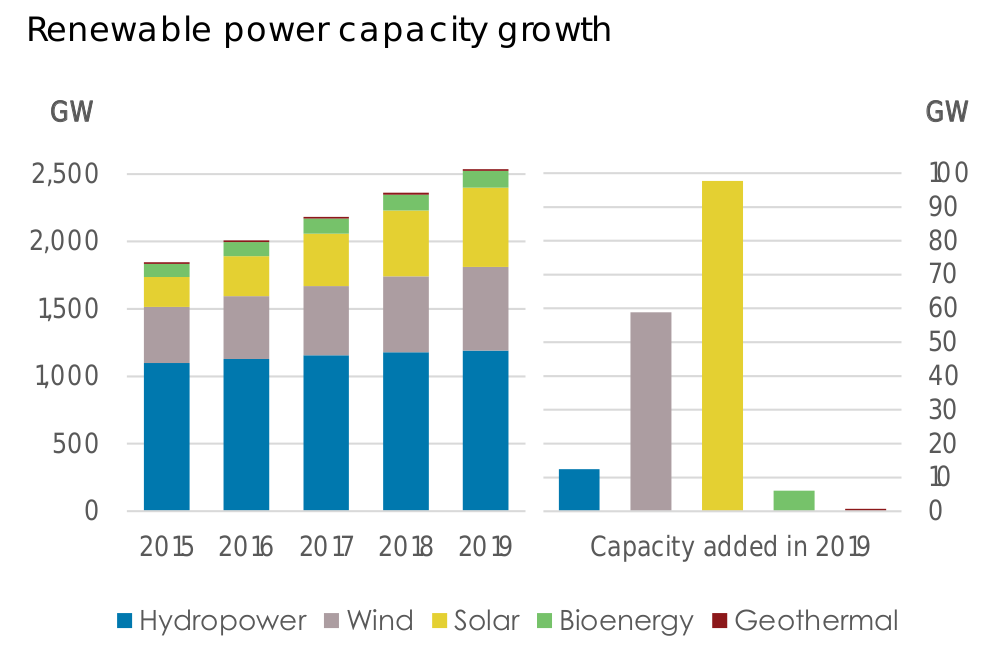Have I told you about how climate change grinds my gears yet? Well, it does. So let's do something about it! But where do we start? How about looking at the largest human-made contributors to CO₂ emissions?
This tells us that in 2014, the largest global contributors were electricity and heat production at almost 50%, followed by transport just above 20%. By the way, that chart is totally interactive, go ahead and click around on it. 🪀🤓 E.g. you can show the same chart for your particular country if you want.
Anyway, having electricity production among the highest contributors to CO₂ emissions is kind of good news. It's good news because we already have the technologies for generating electricity with low emissions all figured out! 🎉
The other part of that largest contributor ― heat production, also has a very promising emerging technology: heat pumps. Heat pumps are rad, because they produce more energy in heat than they consume in electricity. E.g. it's not unusual for a ground source heat pump to produce 4 kWh of heat from 1 kWh of electricity. (Source)

Almost. The missing 3 kWh actually come from the thermal energy of the heat pump's ground source, which itself is a renewable source. Heat pumps are like renewable energy amplifiers 🔥🎸🔥

Next up, we have transport at 20% of global CO₂ emissions. Let's first have a look at how that breaks down further into modes of transport. I couldn't find recent global data for that, so we'll just look at the EU this time:
To be fair, these are greenhouse gas (GHG) emissions, not just CO₂ emissions, but since we're only trying to figure out who's the biggest polluter, it doesn't make that much of a difference.
Here we have a pretty clear winner: road transport, with over 70% of all transport emissions.
By the way, the transport sector makes up 25% of total greenhouse gas emissions in the EU. That means road transport alone accounts for 17% of all of the EU's greenhouse gas emissions combined!
Luckily, we're well under way of figuring out low-emission alternatives for road transport ― with the automotive industry's announced shift to electric and/or hydrogen-powered vehicles.
I say "luckily", because it would be much more worrying if e.g. aviation had a larger share in total emissions, since we didn't yet get very far with low-emission energy sources for planes.
So What About It?
I'm starting to pick up a theme here. Let's put the pieces together:
- 50% of global CO₂ emissions come from electricity and heat production
- Heat production can be electrified
- 17% of EU GHG emissions come from road transport
- Road transport can be electrified
- We've got low-emission electricity generation figured out

Yeah, I wish it were, Kermit 🥺 We may have low-emission, renewable electricity generation figured out, but generation alone is not enough for ⚡ELECTRICAL ENERGY WORLD DOMINATION⚡. The other big piece of the puzzle is getting that electrical energy to all the places it's needed, also known as infrastructure, also known as the power grid.
You see, the power grid we have today was for the most part built with the following assumptions:
- Power will be generated at a few large power plants
- The transmission lines will fan out from these few power plants
- The amount of power generated can be controlled
However, these assumptions are on increasingly shaky ground nowadays. The reason for that is a combination of 3 things.
1. Most Newly Installed Generation is Renewable
In 2019, 72% of newly installed generation was renewable (that includes hydro, wind, solar, bioenergy, and geothermal - just like Captain Planet):

2. Most Newly Installed Renewable Generation Is Non-Dispatchable
Generation is defined as non-dispatchable when it can't be turned on or off on demand. Think wind turbines and solar panels. You don't decide how much energy you're going to produce, or when. You produce when the wind is blowing or the sun is shining, and you produce no more than the wind is blowing or the sun is shining.
In 2019, newly installed wind and solar capacity accounted for 90% of all newly installed renewable sources.

So if 72% of all newly installed generation is renewable, and 90% of all renewable generation is wind and solar, then 65% of all newly installed generation is non-dispatchable, and that share is trending upwards.
3. Wind & Solar Are Decentralised
Pardon the buzzword. Remember how the grid was built with the assumption that there will be few big power plants, with transmission lines fanning outward from there? Well, wind and solar are small and all over the place 🤷♂️
On top of all of these, electrifying heating and road transport means that we're bringing significantly more load onto the power grid.

The Grid Needs Our Help
The combination of the trends above means that the power grid is increasingly faced with the following problems:
- Power is not generated when it's needed
- Power is not generated where it's needed
- The power supply is becoming more volatile
All of this is giving headaches to grid operators, because they're the ones responsible for keeping the grid in balance. Their life used to be easier when power generation came from nothing but dispatchable power plants so they could control everything. If only there were a way of taming those erratic renewable energy sources 🤔
That's Where Virtual Power Plants Come In!

Virtual Power Plants are software systems that provide control over a bunch of distributed energy resources like solar panels, wind turbines, batteries, or flexible loads. They're like the shepherds of the new power grid ― and pretty advanced ones at that.

This is just what grid operators need ― flexibility. As uncertainty in the grid increases with more renewables coming in, so does the need for more sophisticated control of both power generation and consumption. The simplest example of this is a virtual power plant controlling batteries which charge when there's too much production and discharge when there's too much demand (which I covered in this post). However, there's actually a variety of nuanced problems that grid operators face, and for which they increasingly turn to virtual power plants for help. In the next several posts, I will dive deeper into what those problems are, and how we at sonnen solve them.
The best part is that the optimal way of solving these problems, particularly using batteries, often happens to be the most sustainable way ― because batteries essentially attempt to capture excess renewable energy, and feed it back into the grid when there's a lack of it. Today, a huge share of this excess renewable energy is simply thrown away. 🗑️
I guess what I am trying to say is this:
Virtual power plants are crucial for solving the modern problems of the grid, and solving the modern problems of the grid will bring big reductions in greenhouse gas emissions.
In addition to that, they're a lovely engineering problem. 🤖
Anyway, this is how I explain to myself why what I'm working on is important. With that out of the way, now I can tell you about why it's fun! Stay tuned! 🤓
In the mean time, if you have any questions or remarks, let me know in the comments below or on LinkedIn or on Twitter. 👋
